

You’d be surprised how quickly the materials used in a can you drink out of today is recycled into a can someone else will drink out of tomorrow.
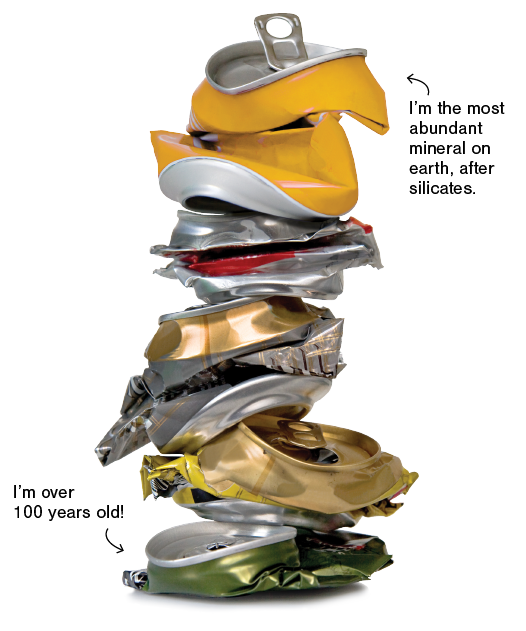
We’re all connected—and when it comes to recycling aluminum cans, we’re all drinking out of the same cans.
Aluminum is such an infinitely recyclable material that 75% of all aluminum produced since the dawn of the industrial revolution—more than 100 years ago—is still in use today.
Mt. Diablo Resource Recovery in Pittsburg moves about 2,000 lbs. of our aluminum each day. When cans enter the plant, they take a ride on the conveyor belt where reverse magnets fling aluminum items up into a cage. They go through quality control and are smashed into bales (see “How it Works,” inside).
Although aluminum is just one of the 300 bales of recycling that are produced in the plant each day, it is the most valuable recycling commodity. “Aluminum cans are a clean, marketable material,” says Facility Manager Jim Nejedly. “They are the stars of your recycling bin so keep sending them our way!” And they help pay for some of RecycleSmart’s recycling programs, especially important with China reducing the amount of recycling they buy.
Most of the recycled aluminum is cans, but don’t forget that aluminum foil and one-use pans are also recyclable. “Just make sure it’s clean before you throw it in the bin, then give us your foil and pie pans too,” Nejedly says. But hold off on throwing in aluminum hubcaps in your bins—those are just too big to be processed at the plant.
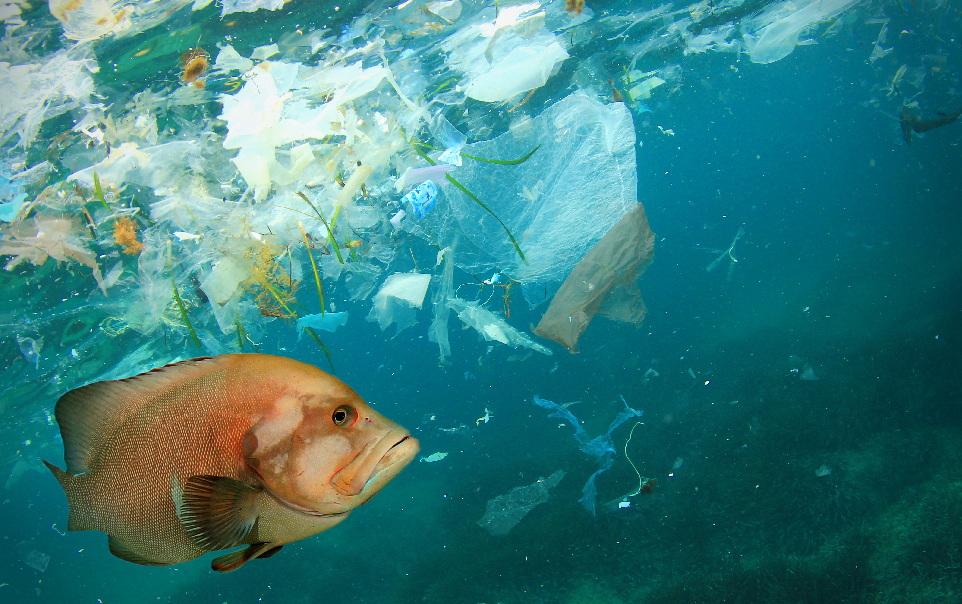
It’s just a little, tiny bit of plastic: a straw, a sandwich bag, a water bottle. But multiply that by the hundreds of thousands of us living here, and you have a deluge of plastic blown out of garbage cans, tossed on the street and washed into stormdrains and creeks. Then they meet up and float their way to the ocean, harming wildlife and looking just downright awful as they go.
Plastics eventually coagulate in the “Great Pacific Garbage Patch,” a huge area in the Pacific filled with microscopic bits of plastic. The World Economic Forum estimates that we add about 8 million tons of plastic every year. And, pound for pound, by 2050 there will be more plastic in the oceans than fish! Plastics can kill small fish and birds and can also be ingested by larger fish and enter into the food chain—where it has many unknown effects.
What can you do? Let us help you! Just keep on recycling.
Republic Services offers one free extra trash pickup (up to 14 bags), but there is a small fee for bulky items. Contact Republic Services at 925-685-4711.
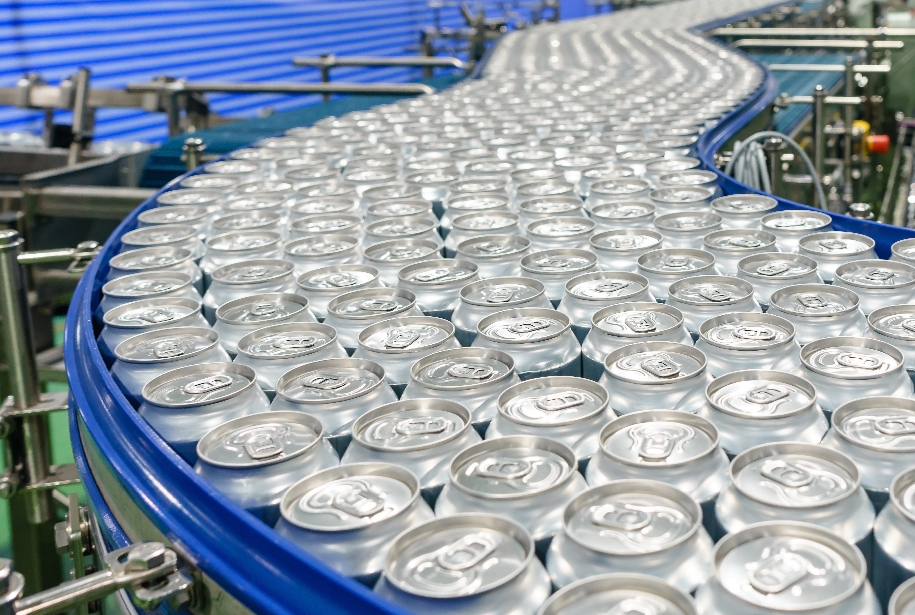
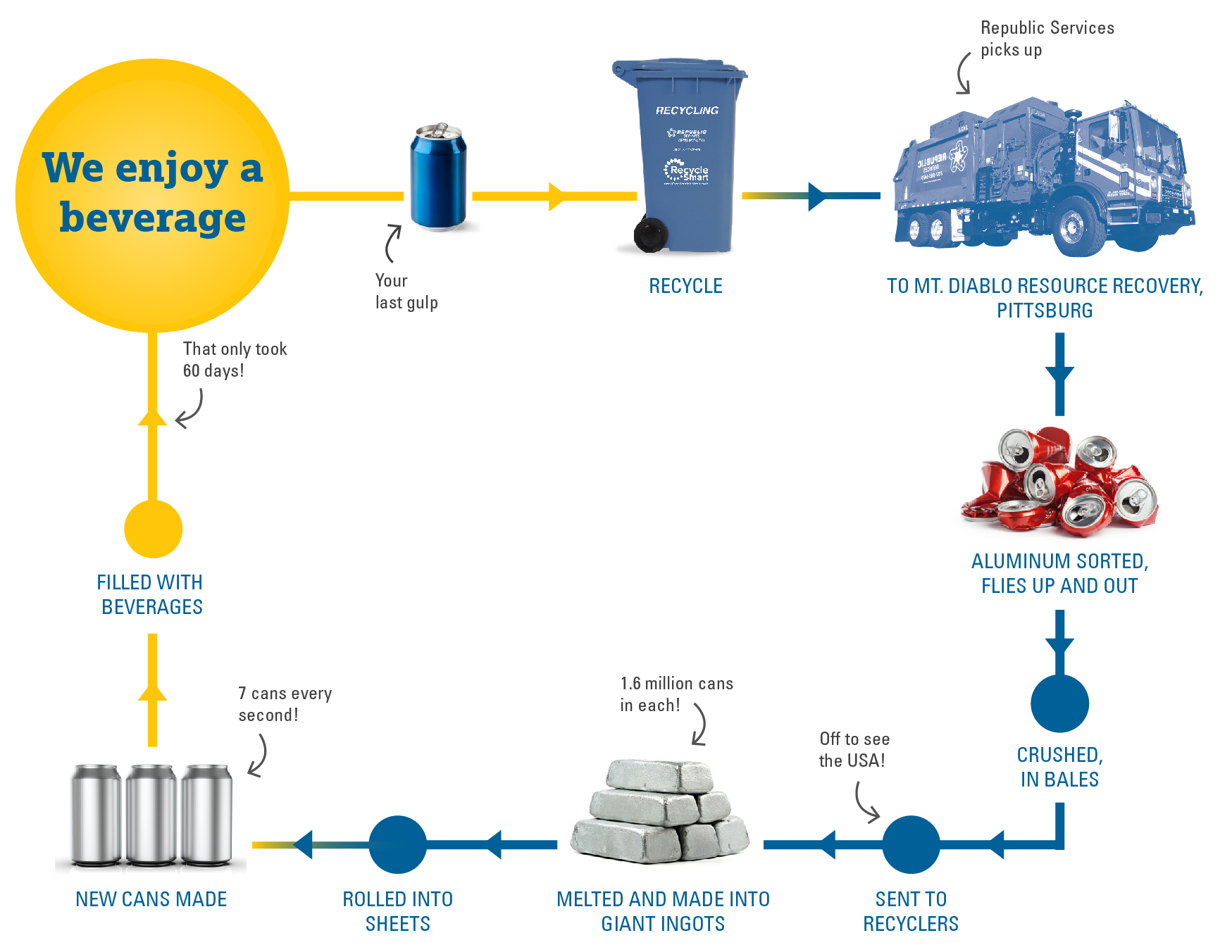
Aluminum recycling is so efficient that the metal in a can of soda you drink out of today will be used in a can someone else will drink out of in less than two months! And within the year, that same can will be recycled eight times. They can also be recycled into airplane and bicycle parts. If not recycled, a can will stay in landfill for 500 years!
Recycling aluminum requires 95% less energy and produces 95% fewer greenhouse gas emissions than manufacturing primary aluminum. In terms of ongoing greenhouse gas emissions savings, that’s like taking 900,000 cars off the road for 12 months.
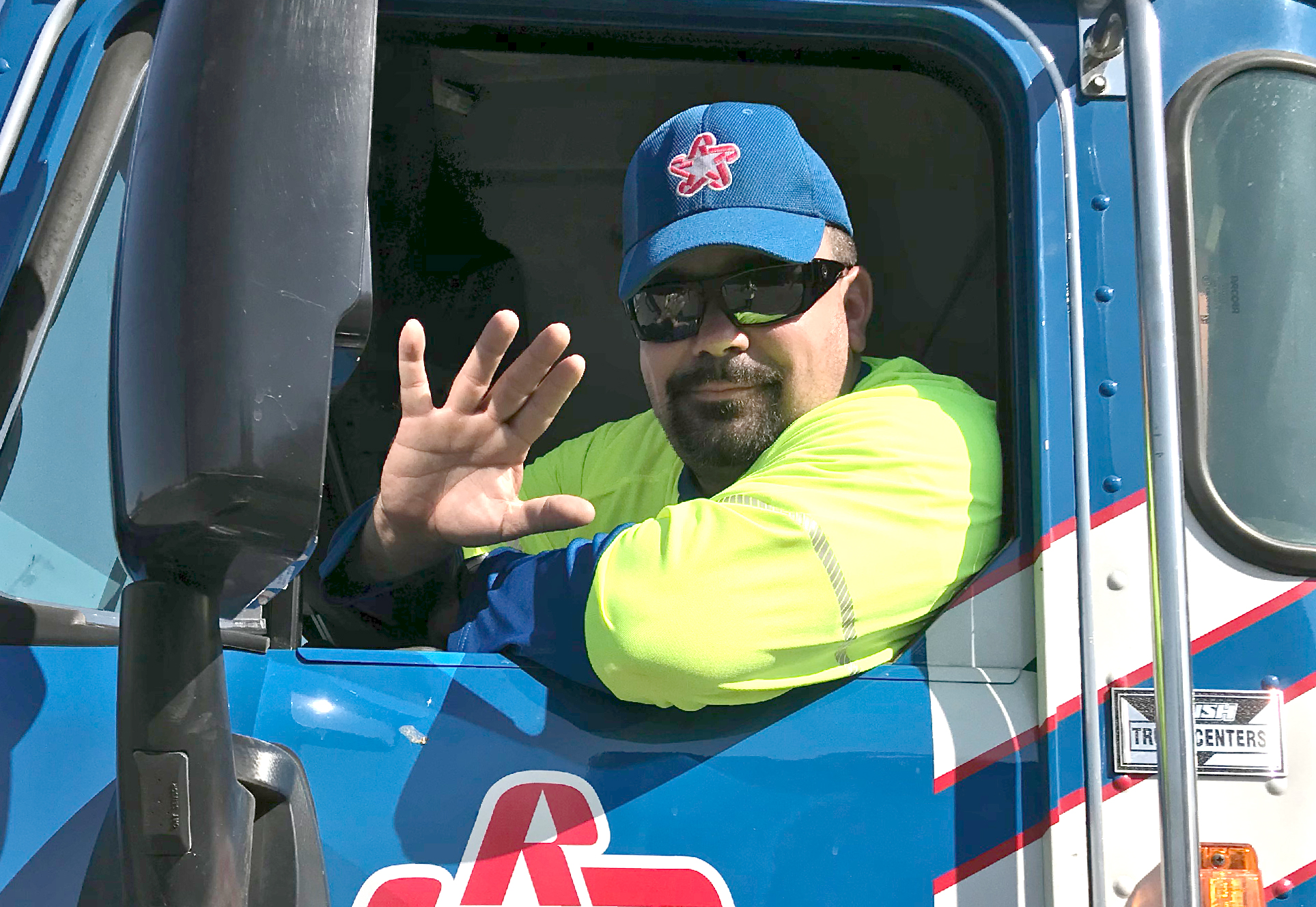
What kid doesn’t love a big front loader hoisting up a big green food waste bin? Actually, everyone loves seeing Eduardo Orozco bring his front loader to grab those bins.
“Eduardo is one of the most enthusiastic and personable truck drivers we have,” says manager James Galicia. Every day Eduardo drives to businesses that generate food waste and participate in RecycleSmart’s Food Recycling Project, sending waste to EBMUD to turn into energy. That’s mainly restaurants, hotels, grocery stores, schools, businesses with cafeterias—and the day care center where kids come running out waving and wanting to hear the truck horn.
“I cover around 100 businesses a day, bringing in about 10.5 tons of food waste,” Eduardo says. “It’s cool to interact with customers, people I wouldn’t ordinarily meet. I like working with them to be sure we keep trash out of the food waste bins.” The only thing he doesn’t like are big fish heads. “It’s startling when you look down and eyes are staring back at you!”
More than 400 businesses participate in the Food Recycling Project. EBMUD captures methane gas as the food breaks down to generate the electricity that powers its water treatment facility—and sells its excess electricity to the Port of Oakland. The leftover is a nutrient-rich compost-like material that goes to non-food agricultural applications.
RecycleSmart, in partnership with Mt. Diablo Resource Recovery, thanks and congratulates student environmental enthusiasts annually with $2,500 scholarships.



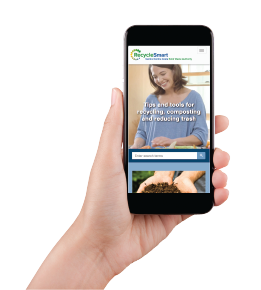
Home Composting for Busy People Workshop: October 13 in Orinda. Sign up for a workshop on backyard composting basics, vermicomposting, mulching and grasscycling. Just go to RecycleSmart.org/workshops
MY TIPS
From Laura K. in Walnut Creek
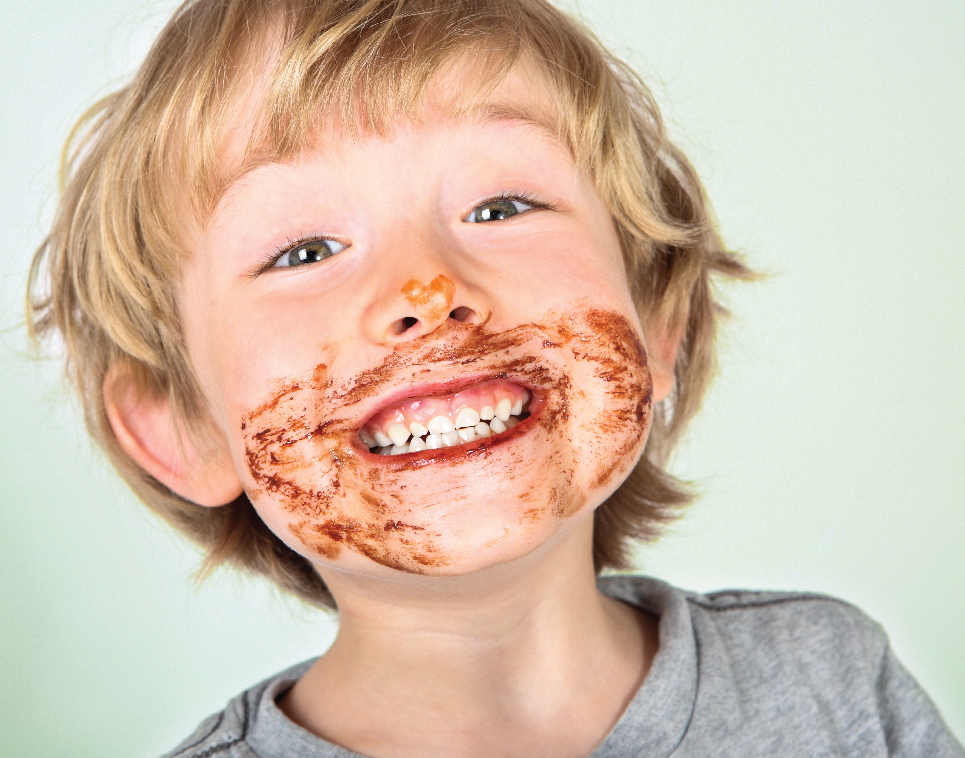
As a working mom of two little boys, I’m constantly pulled between convenience (packaged goods that are quick and easy but create a lot of waste) and doing what is right.
I’m always on the lookout for sustainable solutions that are cheap and simple to set up—that even moms who work full-time can do!
One example is the “cloth napkin system.” I noticed my kids would wipe their mouths once on a paper towel and then throw it away. So I put two containers in the pantry: a “clean” bin full of fresh cloth napkins, and a “dirty” bin where used napkins get tossed. We wash the dirty napkins once a week.
So far the new system works great—we’ve got a ready supply of cloth napkins, and we’ve eliminated paper towels from our lives completely. Considering that the average family uses over 8,500 paper towels each year, I think that’s a pretty good way to help keep the planet (and my kids’ faces) clean!
Send your ideas to Authority@RecycleSmart.org
KIDS CORNER
Try this project with the whole gang. You need a pile of identical pop tops, scissors and two lengths of 5/8" wide ribbon (maybe in your school colors!).
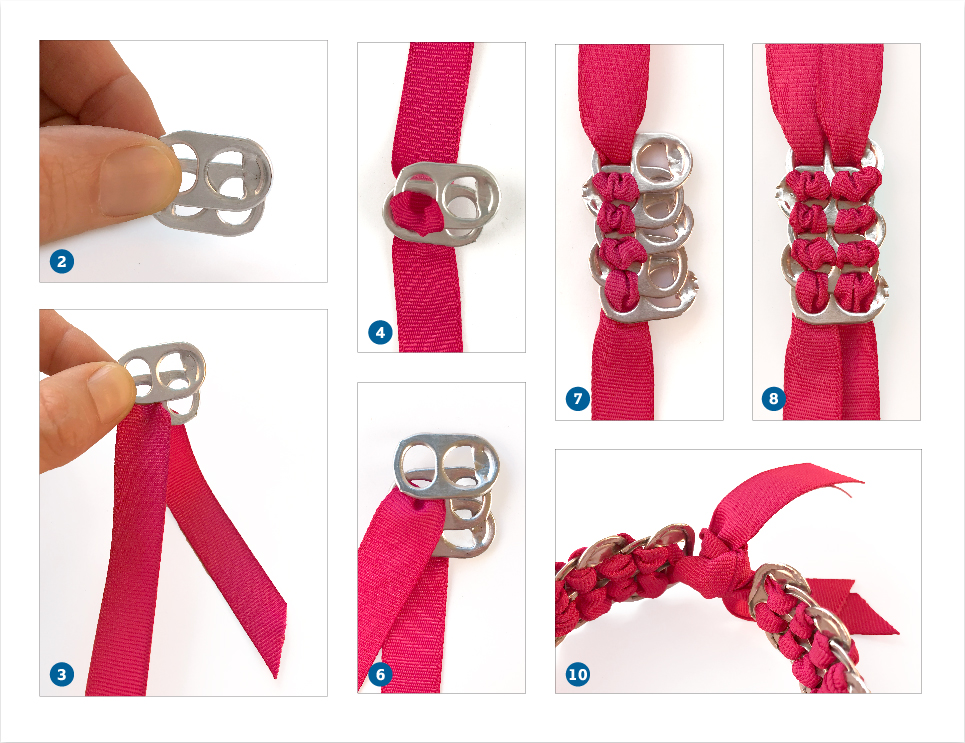
Cut two ribbons about 1 yard each.
Hold two tops horizontally, slightly overlapping, alternating directions, smooth side up.
You should see 6 holes. Push one ribbon end through the bottom left hole, leaving about 4 inches of ribbon not pulled through.
Push the other end through the middle left hole and pull tightly.
Push that same end back towards you through the top hole and pull down.
Add another pop top and push the ribbon though the hole between the 2nd and 3rd tops and then back toward you in the top hole of the 3rd top.
Repeat until you have 5 or so tops.
Do the same thing on the right side holes with your other ribbon.
Continue going back and forth until you have the length you want.
Bring both ends together so you can thread both ribbons toward the back and tie them.